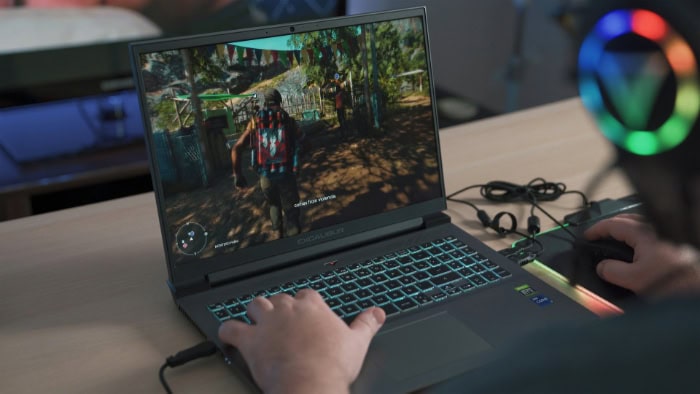FPS vs. TPS: Which Is Better?

Few gaming genres command as much attention and passion as first-person shooters (FPS) and third-person shooters (TPS). These subgenres have carved out their distinct identities, captivating millions of players with their unique perspectives and gameplay dynamics.
While FPS games immerse players in the eyes of their characters, creating a sense of immediacy and tension, TPS titles pull the camera back, offering a broader view of the action and a stronger connection to the protagonist.
Core Differences in Perspective and Mechanics
Game design fundamentally transforms based on the camera system and gameplay priorities of first-person shooters (FPS) and third-person shooters (TPS). The perspective players embody directly shapes how they interact with the world, engage in combat, and absorb the stories being told.
Developers rely on these defining traits to craft mechanics that fit the viewpoint, tailoring each subgenre to a unique style of play.
Camera Systems
The camera system is one of the most noticeable differences between FPS and TPS games. FPS titles place players directly in the shoes of the character, offering an intimate first-person view.
This perspective instills a sense of being physically present in the environment, allowing players to see through the character’s eyes and focus entirely on what’s in front of them. It often accentuates tension, as peripheral vision is limited, encouraging players to rely on quick reactions and precise movement.
The immersive nature of this setup makes it ideal for genres like horror or military combat, where seeing only what the character sees amplifies the stakes.
On the other hand, TPS games pull the viewpoint outward, showing both the character and the surrounding environment. This broader perspective allows players to fully see their avatar and better grasp spatial awareness, making it easier to plan tactical approaches or navigate cluttered environments.
Unlike FPS, where the focus lies on the immediate view ahead, TPS gives players a sense of control over the battlefield or terrain, enabling them to visually track threats from all directions. This setup prioritizes player awareness and character visibility, empowering storytelling through the protagonist’s physical presence on screen.
Gameplay Priorities
The gameplay focus for FPS and TPS games is heavily influenced by their distinct camera perspectives. FPS games are tailored for precision-based actions, requiring players to master aiming and shooting mechanics.
With the viewpoint narrowing the focus to a single weapon and surroundings, FPS titles often emphasize fast reflexes, accuracy, and an ability to adapt instantly to changing scenarios. Whether engaging in high-stakes multiplayer matches or atmospheric single-player campaigns, FPS players are often immersed in adrenaline-pumping moments, where timing and precision make all the difference.
In contrast, TPS games prioritize strategic depth and versatility. Combat often revolves around spatial awareness and utilizing the environment effectively.
Mechanics such as taking cover, evading hazards, or stealth-oriented movement are commonly used to deepen gameplay. The third-person perspective also highlights character-driven action; players feel more connected to the heroes or protagonists as they visibly interact with their surroundings.
The wider viewpoint contributes to a more varied experience, often blending combat, exploration, and platforming to deliver gameplay that feels dynamic and well-rounded.
Gameplay Experience

The gameplay experience in first-person shooters (FPS) and third-person shooters (TPS) is defined by their ability to immerse players while addressing specific design challenges. Each subgenre delivers its own advantages, shaped by player perspective, control mechanics, and technical execution.
FPS Advantages
First-person shooters excel in creating deeply immersive experiences through their intimate perspective. Players view the game world directly through the character’s eyes, which enhances the feeling of presence and emotional connection to the narrative.
Titles like Half-Life demonstrate how this perspective can draw players into a story, where every action feels personal and consequential. The first-person viewpoint often makes storytelling more impactful, especially in moments designed to evoke tension, fear, or adrenaline.
The precision-based nature of FPS gameplay heightens its appeal. Players rely on sharp aiming skills and quick reflexes to succeed, making FPS games particularly exciting for those who thrive under pressure.
The viewpoint encourages accuracy, which is why mechanics such as long-range sniping or headshot precision feel so rewarding. Games like Call of Duty build their core gameplay loops around this skill-dependent shooting, making FPS ideal for both competitive and single-player action.
FPS Limitations
Despite its strengths, the first-person perspective comes with a few notable drawbacks. Restricted peripheral vision is a common obstacle, as players can only see what is directly in front of their character.
This limitation can create challenges when situational awareness is needed, especially during chaotic combat sequences. Furthermore, some players may experience motion sickness due to the close proximity of rapid camera movement, particularly in games with fast pacing or complex, unpredictable environments.
These factors can detract from accessibility for a portion of the audience.
TPS Advantages
Third-person shooters shine in their ability to blend tactical gameplay with visual awareness. The ability to see the character, along with the environment, encourages strategic approaches to combat.
Games like Gears of War take full advantage of this setup, incorporating cover systems that let players plan attacks, anticipate enemy movements, and manage positioning effectively. The wider field of view allows for an elevated sense of control during battles that require more than just quick reflexes.
TPS games often go beyond combat by expanding gameplay to include traversal, exploration, and platforming elements. The third-person perspective makes complex navigation and environmental puzzles more intuitive, as players can see their character interact with surroundings.
This versatility is well demonstrated in Tomb Raider, where the camera enhances climbing, jumping, and other movement-heavy mechanics. The result is a more dynamic and varied gameplay experience that feels natural to the player.
TPS Limitations
While third-person shooters benefit from expanded visibility, they occasionally suffer from technical challenges. Camera obstructions can occur when the character is positioned near walls, corners, or confined spaces, breaking player immersion and requiring manual adjustment to regain clarity.
In addition, the broader view and distance from the character can make aiming less precise, particularly when targeting smaller or fast-moving enemies. These elements may result in moments of frustration for those who prioritize accuracy and responsiveness in their combat encounters.
Both genres offer a variety of highlights and drawbacks that define their gameplay experiences. While FPS emphasizes immersion and precision, TPS builds its foundation on tactical combat and versatility.
The interplay between these strengths and limitations demonstrates why these genres remain distinct yet complementary in the gaming world.
Design and Development Considerations

The process of designing first-person shooters (FPS) and third-person shooters (TPS) revolves around the unique demands of their respective perspectives. Developers must tailor every aspect of the game, from modeling to mechanics, to create a seamless experience that aligns with player expectations.
While FPS emphasizes immersion and precision through simplified visual elements, TPS relies on more complex systems to enhance spatial awareness and character presence.
FPS Design Factors
The design philosophy behind FPS games centers on the player’s limited viewpoint, which directly impacts how characters and environments are presented. Since players only see the world through the eyes of their avatar, character modeling can be simplified in certain areas.
Developers often prioritize weapon and arm animations, ensuring smooth and realistic movements that enhance combat immersion. This reduction in visible character details allows resources to be allocated elsewhere, such as in refining environmental graphics and gameplay mechanics.
Environmental detail plays a significant role in FPS design, compensating for the narrow field of vision players experience. Developers craft immersive surroundings that feel lifelike, using realistic textures, dynamic lighting, and interactive elements to enrich the experience.
The confined perspective may obscure peripheral areas, but the world immediately in view is polished to ensure players feel immersed in their surroundings. For narrative-driven titles, this focus on environmental storytelling can elevate tension and engagement, drawing players deeper into the narrative.
TPS Design Factors
Third-person shooters demand a more technically intricate approach, as the broader perspective introduces unique challenges. Developers must create camera systems that function smoothly across a variety of in-game scenarios.
Camera clipping is a common issue that arises when the character moves into tight spaces, causing the camera to unintentionally pass through objects or result in disorienting angles. To minimize these issues, designers invest heavily in programming dynamic camera behaviors that adjust automatically based on positioning and proximity to obstacles.
This ensures players maintain clarity throughout exploration and combat encounters.
Character design and animations are another cornerstone of TPS development, as players frequently see their avatars on screen. Developers focus on crafting visually appealing characters with detailed textures, lifelike movements, and expressive animations.
These design elements enhance the connection players feel toward the protagonist, bringing a sense of personality and relatability that complements the broader perspective. Combat animations are particularly important, as players need to see their character’s actions flow smoothly during dynamic engagements.
Additionally, the visible avatar becomes a storytelling tool, helping convey emotion and depth that resonates throughout gameplay.
Player Appeal and Genre Flexibility

The appeal of first-person shooters (FPS) and third-person shooters (TPS) lies in the distinct experiences they offer, catering to diverse player interests and playstyles. While FPS draws players in through immersive perspectives and skill-driven combat, TPS thrives on its ability to deliver narrative depth and tactical gameplay.
As gaming technology evolves, many modern titles blur the lines between these genres, creating hybrid experiences that combine elements of both perspectives.
FPS Audience
First-person shooters are often the go-to genre for competitive players who enjoy fast-paced and skill-based challenges. FPS titles such as Counter-Strike focus heavily on precision and reaction speed, making them popular in esports and multiplayer communities.
The immersive nature of FPS games amplifies the sense of urgency and mastery, as players are fully engrossed in their surroundings. These games reward reflexes, aiming accuracy, and strategic movement, attracting gamers who thrive in intense, head-to-head matchups.
Beyond competitive gameplay, FPS titles appeal to those seeking immersion in atmospheric environments. Games like Resident Evil 7 use the first-person perspective to elevate tension and fear, pulling players directly into the horror experience.
The limited visibility amplifies the emotional connection to the game’s setting, making the player feel vulnerable and invested in the unfolding narrative. This ability to immerse players emotionally and visually has cemented FPS as a preferred genre for horror and psychological thrillers.
TPS Audience
Third-person shooters resonate with players who prioritize storytelling, character development, and cinematic gameplay experiences. Games such as The Last of Us showcase the richness of narrative-driven design, where the visible protagonist plays a central role in conveying emotion and context.
The broader perspective allows for a more palpable connection to the character, as players witness their actions, struggles, and humanity firsthand. In this way, TPS becomes a powerful platform for delivering experiences that feel personal and emotionally engaging.
Tactical and cooperative gameplay enthusiasts are also drawn to the third-person format. The emphasis on spatial awareness and environmental interaction encourages players to approach challenges strategically, making titles like Gears of War especially rewarding.
The ability to coordinate with teammates during combat or make effective use of cover systems elevates the gameplay beyond reflexes alone. This genre excels in fostering teamwork and calculated planning, appealing to those who enjoy methodical yet action-packed gameplay.
Hybrid Examples
As gaming technology progresses, the boundaries between FPS and TPS have begun to blur, giving rise to hybrid experiences that leverage the strengths of both perspectives. Certain titles, such as Cyberpunk 2077, offer players the option to switch between first-person and third-person viewpoints, allowing for gameplay adjustments based on preference or scenario.
This flexibility enriches player engagement, as the choice of perspective can tailor the experience to suit exploration, combat, or narrative focus.
Genre-blending games, such as Mass Effect, combine FPS-style combat mechanics with the narrative depth and character-driven action of TPS. These titles harness the precision of first-person combat while maintaining the visual and emotional appeal of third-person gameplay.
By incorporating elements from both subgenres, hybrid games create dynamic experiences that appeal to a wide range of audiences, merging immersion with tactical complexity.
Conclusion
The distinctions between first-person shooters (FPS) and third-person shooters (TPS) highlight the unique ways perspective shapes player experiences. FPS games stand out for their immersive qualities, pulling players directly into their environments while emphasizing precision aiming and reactive combat.
In contrast, TPS games excel in offering broader situational awareness, tactical gameplay, and a stronger visual connection to the protagonist. Each genre caters to different priorities, with FPS focusing on immediacy and skill, while TPS provides depth through strategy and character-driven action.
Preferences ultimately depend on what players value most in a gaming experience. Those seeking adrenaline-fueled, first-person immersion may gravitate toward FPS titles, while gamers drawn to engaging narratives and strategic challenges often lean toward TPS.
Both formats bring unique strengths to the table, ensuring there is something for every type of player.
Modern game design has also blurred the lines between these genres. Hybrid titles and games with perspective-switching mechanics demonstrate how developers are innovating to combine the benefits of both styles.
As technology continues to advance and player expectations evolve, the collaboration between FPS and TPS elements ensures that the future of shooter games will remain as diverse and exciting as ever.


